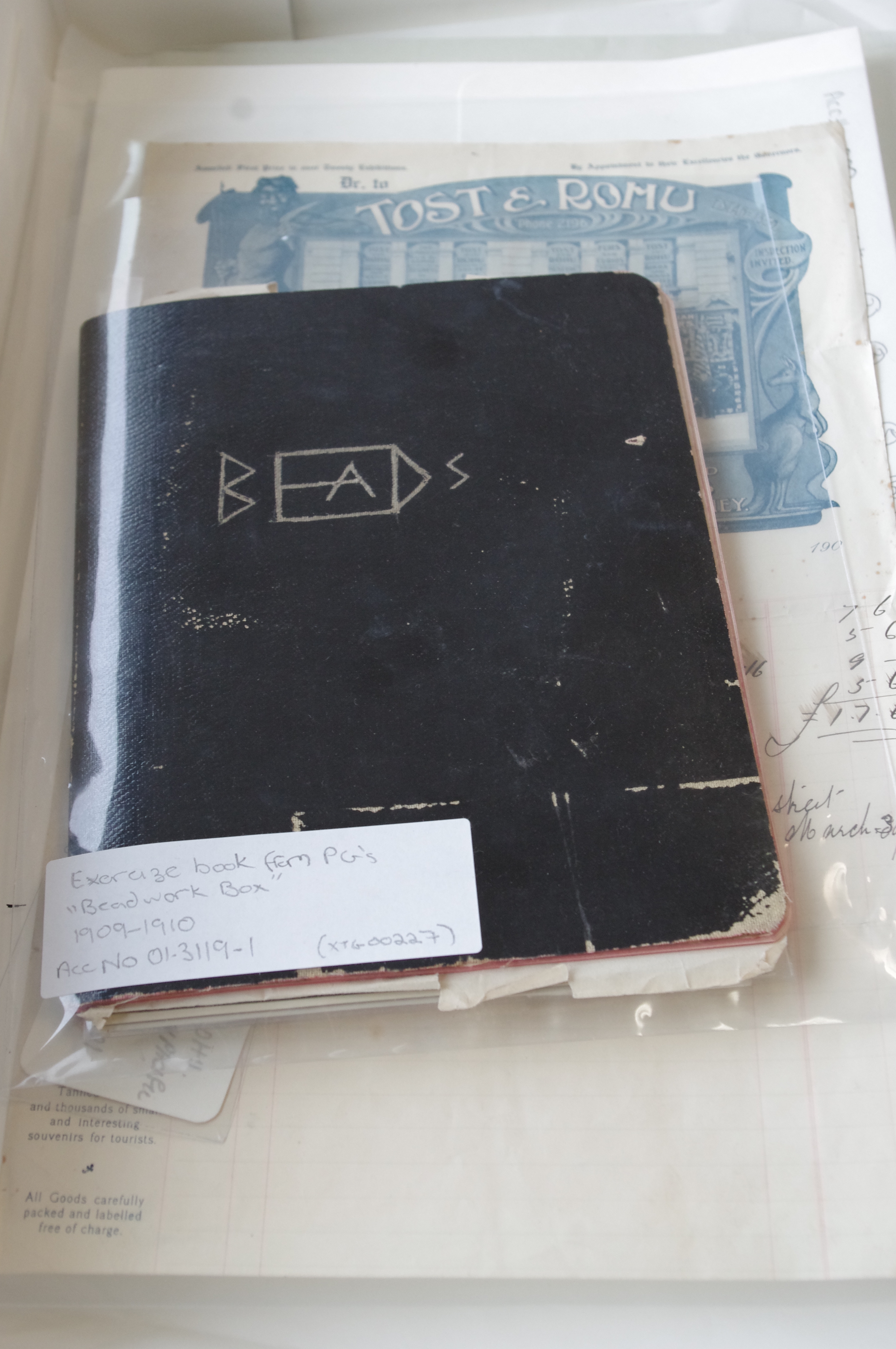Account for goods purchased by Percy Grainger
Download

Account for goods purchased by Percy Grainger, 30 March 1909
printer’s ink and manuscript on paper
33.6 x 21.2 cm
Grainger Museum
University of Melbourne
01.3119.2

Grainger Museum, University of Melbourne
The favourite shop in Sydney of the Australian musician Percy Grainger (1882–1961) was Tost & Rohu, owned and operated by Jane Tost and her daughter Ada Rohu. Tost was a taxidermist par excellence and may also have been the first woman in Australia to work professionally in a museum. She left the Australian Museum to open the business with her daughter, a former actress turned taxidermist. Visitors to Sydney were enticed to visit the shop, which boasted in its advertising ‘the largest stock in Australia of genuine native implements and curiosities … entomological specimens & requisites, birds and animals mounted in life-like style, fancywork goods and glass domes’.
Grainger collected ethnographic material principally for its aesthetic and design appeal, which inspired his own creative projects; he had little interest in the provenance of the objects. This account records his purchase of a skirt from Oceania, made of string and coconut fibre. Grainger’s label on the garment notes that it was to hang on the mantelpiece of his music room. He was also photographed wearing the skirt, which he chose to accessorise with beadwork (a necklace he made himself). The account sheds light on the way in which Grainger acquired objects for his museum, his interaction with them and how he determined their display.
Teaching ideas
The University of Melbourne’s curriculum is rich and varied, and changes from year to year. For more teaching ideas, contact a collection manager.
Respect
Explore issues relating to context, disruption, authenticity, legal standing, development, reinvention, identity and minority status in the preservation of cultural material in the Grainger Museum’s ethnographic collection, to understand the importance of material culture in people’s lives.
History and Philosophy of Museums
Visit the Grainger Museum exhibitions to analyse ways in which the objectives of Percy Grainger (for example, moral elevation, public instruction, mass entertainment, and propaganda) are reflected in the architecture, design and display techniques.
Collection Management
Develop specific skills associated with accessioning and de-accessioning, cataloguing systems, and collection policies, related to art and ethnographic collections in the Grainger Museum.
Interpreting Exhibitions
Focus on current exhibition and display settings, using the Grainger Museum as a case study, to discuss ways to frame a particular exhibition. Draw upon the diverse objects on display to develop an appreciation for museological, critical theory, and art-historical approaches to studying exhibitions.
Historicising the Colonial Mythscape
Visit the Grainger Museum to engage with archival and cultural materials in order to understand the intersection of archival, political and literary documentation in disclosing new perspectives on key historical events. Consider themes of national amnesia, memory and memorials.
Global Literature and Postcolonialism
View examples from the ethnographic collection at the Grainger Museum to address themes such as civilisation, cultural encounter, and interracial conflict and desire.
Cultural Complexity and Intelligence
Apply cultural intelligence theories to a range of case studies identified from the Grainger Museum Collection.
Social Enterprise Incubator
Communicate effectively with Grainger Museum staff and potential project stakeholders to identify and develop a social enterprise project for the Grainger Museum.
Intersecting object
To learn more, visit the website of the Grainger Museum.
Further reading
Rose Docker, ‘The queerest shop in Australia’, Explore, vol. 34, no. 2, June–August 2012, pp. 3–4.
Elinor Wrobel, Percy Grainger: The noble savage: Featuring original costumes, photographs, memorabilia, ethnographic artefacts and music, Grainger Museum, University of Melbourne, 1992.
